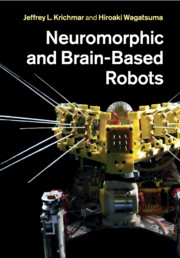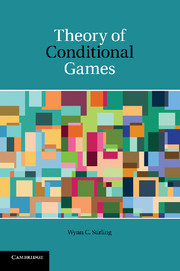Refine search
Actions for selected content:
3326 results in Artificial Intelligence and Natural Language Processing

Neuromorphic and Brain-Based Robots
-
- Published online:
- 05 February 2012
- Print publication:
- 01 September 2011
Generating example contexts to help children learn word meaning†
-
- Journal:
- Natural Language Engineering / Volume 19 / Issue 2 / April 2013
- Published online by Cambridge University Press:
- 12 January 2012, pp. 187-212
-
- Article
- Export citation
Modeling Sociocultural phenomena in discourse
-
- Journal:
- Natural Language Engineering / Volume 19 / Issue 2 / April 2013
- Published online by Cambridge University Press:
- 12 January 2012, pp. 213-257
-
- Article
- Export citation
When the answer comes into question in question-answering: survey and open issues
-
- Journal:
- Natural Language Engineering / Volume 19 / Issue 1 / January 2013
- Published online by Cambridge University Press:
- 10 January 2012, pp. 1-32
-
- Article
- Export citation
A fast and flexible architecture for very large word n-gram datasets
-
- Journal:
- Natural Language Engineering / Volume 19 / Issue 1 / January 2013
- Published online by Cambridge University Press:
- 10 January 2012, pp. 61-93
-
- Article
- Export citation

Theory of Conditional Games
-
- Published online:
- 05 January 2012
- Print publication:
- 19 December 2011
Name Index
-
- Book:
- Theory of Conditional Games
- Published online:
- 05 January 2012
- Print publication:
- 19 December 2011, pp 229-231
-
- Chapter
- Export citation
6 - Satisficing
-
- Book:
- Theory of Conditional Games
- Published online:
- 05 January 2012
- Print publication:
- 19 December 2011, pp 139-173
-
- Chapter
- Export citation
2 - Conditioning
-
- Book:
- Theory of Conditional Games
- Published online:
- 05 January 2012
- Print publication:
- 19 December 2011, pp 32-72
-
- Chapter
- Export citation
Frontmatter
-
- Book:
- Theory of Conditional Games
- Published online:
- 05 January 2012
- Print publication:
- 19 December 2011, pp i-vi
-
- Chapter
- Export citation
8 - Conclusion
-
- Book:
- Theory of Conditional Games
- Published online:
- 05 January 2012
- Print publication:
- 19 December 2011, pp 209-215
-
- Chapter
- Export citation
Preface
-
- Book:
- Theory of Conditional Games
- Published online:
- 05 January 2012
- Print publication:
- 19 December 2011, pp ix-xiv
-
- Chapter
- Export citation
A - Probability
-
- Book:
- Theory of Conditional Games
- Published online:
- 05 January 2012
- Print publication:
- 19 December 2011, pp 216-222
-
- Chapter
- Export citation
3 - Solutions
-
- Book:
- Theory of Conditional Games
- Published online:
- 05 January 2012
- Print publication:
- 19 December 2011, pp 73-95
-
- Chapter
- Export citation
Contents
-
- Book:
- Theory of Conditional Games
- Published online:
- 05 January 2012
- Print publication:
- 19 December 2011, pp vii-viii
-
- Chapter
- Export citation
5 - Uncertainty
-
- Book:
- Theory of Conditional Games
- Published online:
- 05 January 2012
- Print publication:
- 19 December 2011, pp 126-138
-
- Chapter
- Export citation
Subject Index
-
- Book:
- Theory of Conditional Games
- Published online:
- 05 January 2012
- Print publication:
- 19 December 2011, pp 232-236
-
- Chapter
- Export citation
Bibliography
-
- Book:
- Theory of Conditional Games
- Published online:
- 05 January 2012
- Print publication:
- 19 December 2011, pp 223-228
-
- Chapter
- Export citation
1 - Sociality
-
- Book:
- Theory of Conditional Games
- Published online:
- 05 January 2012
- Print publication:
- 19 December 2011, pp 1-31
-
- Chapter
- Export citation
7 - Applications
-
- Book:
- Theory of Conditional Games
- Published online:
- 05 January 2012
- Print publication:
- 19 December 2011, pp 174-208
-
- Chapter
- Export citation
